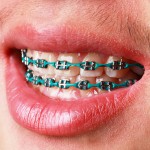
Many clinicians routinely use lacebacks to control incisor position during orthodontic alignment, they have not met with universal approval. The aim of this review was to evaluate the effectiveness of laceback ligatures during the initial alignment phase of orthodontic treatment.
What did they do?
The Medline, Cochrane Central Register of Controlled Trials, LILACS, IBECS, national research register and Pro-Quest Dissertation Abstracts and Thesis databases were searched. Only randomised controlled trial in patients with full-arch, fixed, bonded orthodontic appliance(s) were included Studies involving split-mouth designs and sectional appliances were. Risk of bias was assessed with the Cochrane Collaboration risk of bias tool. The quality of the evidence was also assessed using GRADE. Mean differences in incisor inclination and antero-posterior changes in incisor and molar position during alignment were calculated.
The review protocol is available on the PROSPERO database (National Institute of Health Research Database, University of York ( Protocol: CRD42012001910).
What did they find?
- Two studies ( 97 participants) were found to be at low risk of bias and were included in the quantitative synthesis.
- The overall quality of evidence was high according to the GRADE assessment,
- The random effects meta-analysis found:
- laceback use was associated with 0.5 mm greater posterior movement of the incisors during alignment; this is of limited clinical importance and statistically non-significant [95 % confidence interval (CI): −1.25, 0.25, P = 0.19].
- There was little difference between laceback and non-laceback groups with regards to mesial molar movement 0.46 mm(95 per cent CI: −0.33, 1.24, P = 0.26).
They concluded
On the basis of the available evidence, the use of lacebacks has neither a clinically nor a statistically significant effect on the sagittal position of the incisors and molars during initial orthodontic alignment.
Fleming PS, Johal A, Pandis N. The effectiveness of laceback ligatures during initial orthodontic alignment: a systematic review and meta-analysis. Eur J Orthod. 2012 Apr 26. [Epub ahead of print] PubMed PMID: 22539592

[…] […]